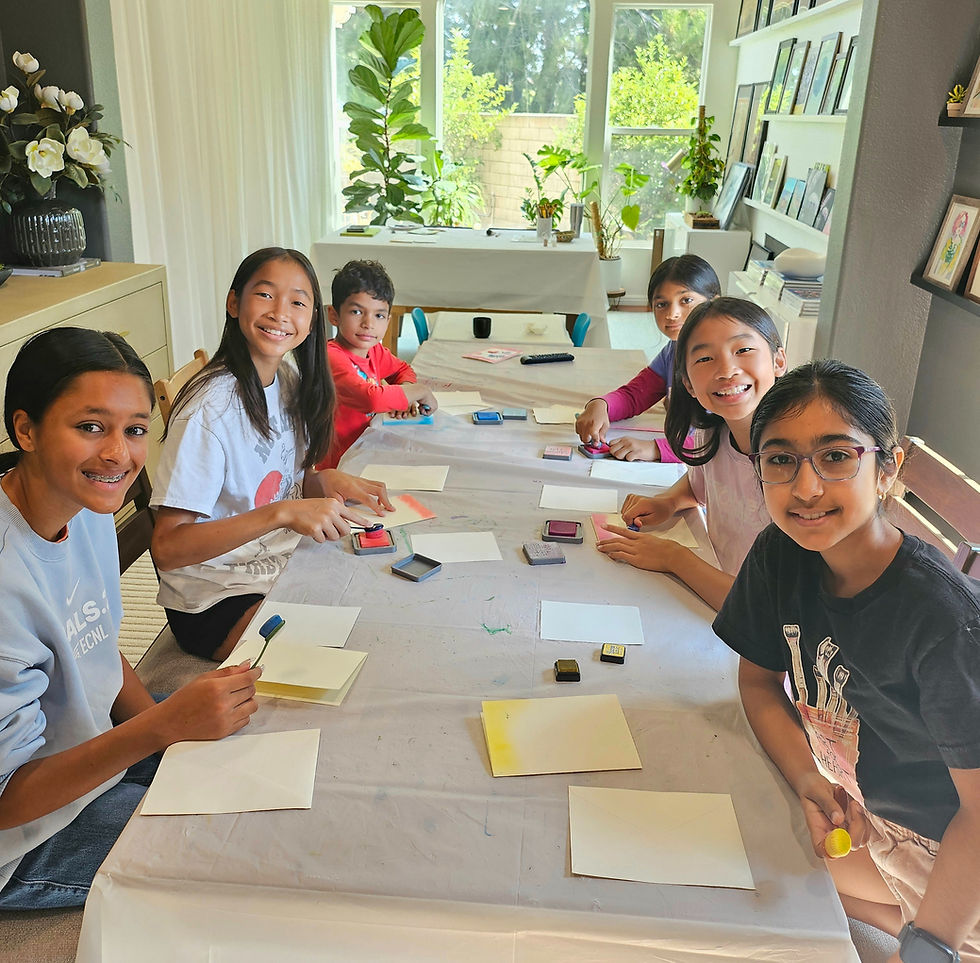Oil Pastels Techniques Every Young Artist Should Try
- Prachi R.

- Jul 15
- 3 min read

Oil pastels are one of the most magical tools a young artist can hold. Creamy, vibrant, and full of personality, they offer endless possibilities for creative expression. Whether your child is just beginning their artistic journey or already loves to doodle on every surface in sight, oil pastels are the perfect medium to explore textures, color blending, and personal style — all while having fun.
At Art For Heart, we introduce kids to art through hands-on techniques that ignite curiosity and boost creative confidence. In this blog, we’re sharing some of our favorite oil pastel techniques that are kid-friendly, mess-friendly, and joy-filled.
Why Choose Oil Pastels for Kids?
If you're looking for a creative activity that’s as fun as it is educational, oil pastels tick every box:
No mess, no stress – No need for brushes, water, or drying time
Vibrant colors – Instant visual satisfaction and engagement
Tactile fun – Kids can use their hands to blend and play
Safe for young artists – Easy to grip and non-toxic
Perfect for experimentation – Blend, layer, scratch, and explore!
They’re a favorite in our classrooms for a reason—they build skills without intimidating new learners.
Basic Techniques Every Young Artist Should Try
Let’s explore some beginner-friendly techniques we love teaching in our weekly classes.
1. Blending with Fingers
Soft, smooth, and oh-so-satisfying! Kids love smudging colors together with their fingers. It’s the easiest way to see how colors mix.
Pro Tip: Keep tissues or wipes handy—it gets messy in the best way.
2. Layering Colors
Teach kids to layer from light to dark. This builds depth and introduces basic color theory.
Example: Layer yellow and blue to create green—watch the surprise on their faces!
3. Sgraffito (Scratch Art)
This one feels like magic! Apply a light color first, layer a darker color on top, then scratch a pattern to reveal what’s underneath.
We use toothpicks, the edge of a ruler, or even bobby pins for scratching.
4. Scumbling (Doodled Texture)
Using small, circular, overlapping strokes, kids can create amazing textures—perfect for clouds, tree bark, or fur.
5. Blending with Tissue or Cotton Swab
For more polished effects, a soft tool like tissue helps create dreamy gradients and soft shadows.
6. Pointillism with Dabs
Teach patience and control through dot painting. Small dabs of color add up to a beautiful impressionist effect!
Creative Ideas to Try at Home or in Class
Want to spark your child’s creativity with some fun projects? Try these:
Blended Rainbow – Use finger blending for a colorful arc
Scratch Art Fish Underwater – Sgraffito technique in cool blues and greens
Textured Garden Scene – Use scumbling to draw grass and flowers
Pointillism Balloons – Colorful dots make a whimsical birthday card or wall art
Common Mistakes & How to Avoid Them
Don’t worry—mistakes are part of learning. But here are some common ones to help your child grow:
Too much pressure → Can break pastels. Encourage gentle strokes.
No fixative used → Artwork might smudge. Use a light spray or frame behind glass.
Not enough layering → Results can look flat. Layer, blend, and explore!
What Kids Learn Through These Techniques
At Art For Heart, we believe every mark your child makes has meaning. These techniques help children:
Develop fine motor skills and hand-eye coordination
Build focus, patience, and attention to detail
Understand color theory in a hands-on way
Grow confidence through creative freedom
Oil pastels aren’t just art supplies — they’re tools for growth, imagination, and joyful exploration. With the right techniques and a little encouragement, kids can create beautiful, frame-worthy art while learning lifelong skills.
Want your child to explore more creative techniques like these? Give them a place to grow their artistic voice in a nurturing, fun environment.
Join our weekly art class in San Diego where young artists thrive through hands-on learning, guided by passion and play.


.png)






Comments